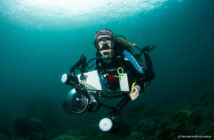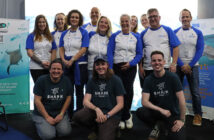Environmental organisation WWF-New Zealand says that the New Zealand government is failing to protect the last 63 Māui dolphins by allocating oil and gas exploration rights within Māui dolphin habitat off Taranaki.
The Ministry for Business, Innovation and Employment today announced that it is handing out a 12-year oil and gas exploration permit for 547km2 of ocean within the known range of our critically endangered Māui dolphins.
“Allocating oil exploration rights in the Māui dolphin habitat is just irresponsible. Only around 63 Māui dolphins survive today and the seismic blasting used in oil exploration is known to affect whales and dolphins,” said WWF-New Zealand CEO Livia Esterhazy.
“This makes no sense when all three parties in the current government have pledged to extend protection for Māui dolphins. We should not be exposing these critically endangered animals to additional threats like seismic blasting. Instead, the government should be doing everything it can to protect these dolphins throughout their entire habitat.”
WWF calls for full protection for the last 63 Māui dolphins wherever they swim. This means a genuine sanctuary, ending set netting and conventional trawling with help for fishers to transition to dolphin-safe methods, and placing a moratorium on risky marine mining activities and seismic testing, from Maunganui Bluff to the Whanganui River mouth, including harbours, in waters out to 100 metres deep.
WWF-New Zealand also calls for government to end new oil exploration to complement its climate change commitment to pass a Zero Carbon Act.
“Even if Māui dolphins did not live there, it would still be inconsistent for the government to keep allowing new oil and gas exploration while aiming to lower our greenhouse gas emissions,” Ms Esterhazy said.
“Business as usual will not get New Zealand to the government’s target of net-zero emissions by 2050. We should be planning for the transition to a 100% renewable, clean energy future, not continuing to search for new fossil fuels.”









